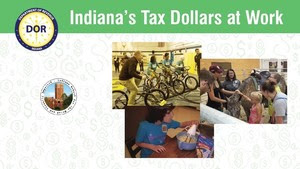
(INDIANAPOLIS) – It’s August, which means school will be back in session for most of Indiana, and the Indiana School for the Blind and Visually Impaired (ISBVI) is no exception.
ISBVI uses state tax dollars to provide quality education and more to those who have a visual impairment.

The ISBVI is one of the largest schools in the country dedicated to teaching the blind or visually impaired. Annual enrollment is around 140 students in pre-school to 12th grade. An additional 350 students receive specialized instruction in their homes or local schools through ISBVI’s outreach program.
Education for all students is two-fold. Students are taught core subjects like reading, writing and math along with the techniques and skills necessary for students who are blind or have low vision using an Expanded Core Curriculum to navigate their physical, social and personal worlds. In fact, each student has an individualized plan based on their specific needs.
Let’s first start by exploring elementary-level classes. Approximately, 40 students in pre-school to 5th grade attend. Along with the core curriculum, students get the chance to engage in fun activities such as field days, cooking classes, therapeutic horseback riding, visits to the Indianapolis Opera Company, and the Storytelling Festival.
Middle and high school combined enrollment averages around 100 students per year. These students also have the option to attend classes at nearby North Central High School to get a broader range of academic and vocational subjects. After school activities abound, including cheerleading, forensics, swimming, track, beep baseball, sound enhanced disc golf and goalball (a soccer style game designed specifically for students who are blind or have low vision).
To prepare students for entering the world outside of ISBVI, a formal transition plan is created when a student turns 14 to prepare them for post-secondary education, technical training, or employment.
Students in traditional school settings benefit from ISBVI’s outreach program which works with local education agencies and teachers on how to teach blind/low vision students. The program also provides supports to children ages 0 to 3 and their families through the Family and Social Services Administration (FSSA) First Steps program and preschool assistance for those 3 to 4 years of age.
The outreach program also provides assistive technology and consultants to suggest instructional strategies and adaptations Additionally, training and assistance with functional vision/literacy assessments is provided.
In the last five years, ISBVI has graduated 66 students. To learn more about ISBVI’s facility and programs, visit in.gov/isbvi.



